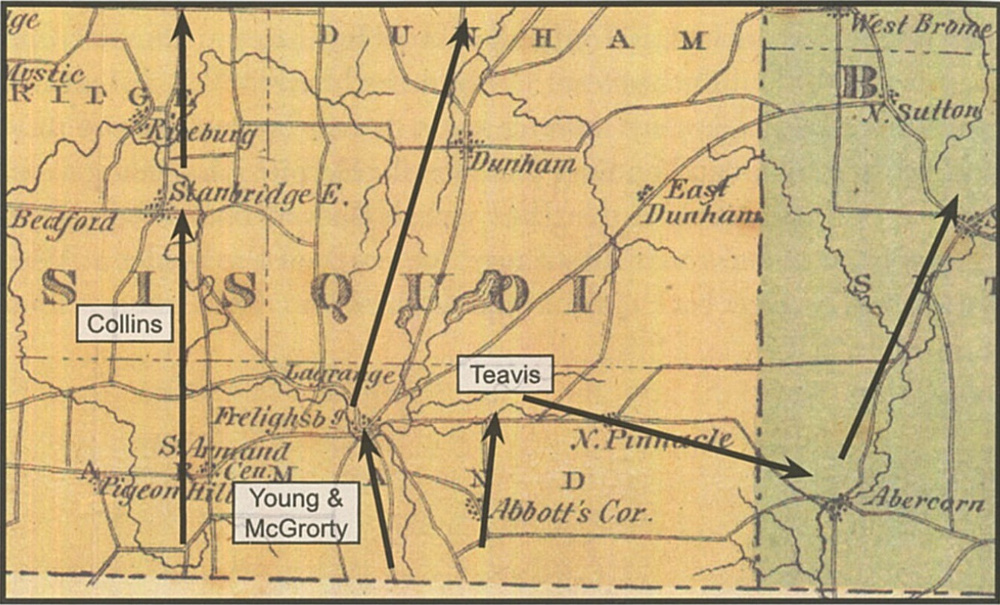An act of war
But let’s go back to 1864. On October 19, with the American Civil War raging across the border, about 20 Confederate agents intended to seek refuge in Montreal after robbing three banks in St. Albans of more than $200,000. The money was to be used to help finance the war in the southern states.
The robbers used different routes to flee to Canada. According to Knowlton novelist Donald Davison, six of them followed the Sutton River Valley. Eventually, 14 fugitives were arrested by Canadian authorities, including two in the Waterloo region; they were likely part of the group that had crossed the Sutton River Valley.
Only five of the St. Albans raiders were ever tried. The United States sought their extradition; the defence argued that they were soldiers and the St. Albans raid was a chapter in the Civil War organized by the Confederate Government in the South. The defendants were released. The American government responded by requiring that anyone entering the United States through British North America had to have a passport. Congress even threatened to repeal the reciprocal trade treaty that had been in force since 1854.



